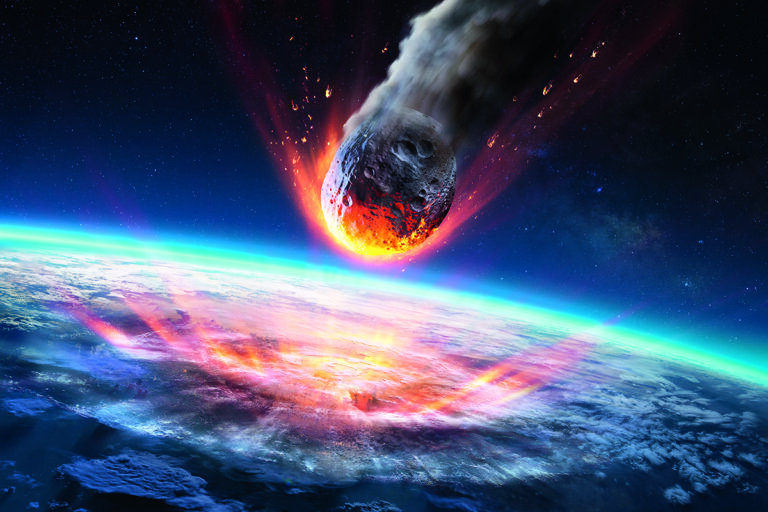To assess nuclear weapons’ efficacy as a defense against asteroids, scientists are modeling the effects of nuclear weapons on asteroids.
As a result of the successful testing of an asteroid defense technique by NASA with its DART mission, researchers at Lawrence Livermore National Laboratory developed a modeling tool to evaluate the possibility of employing a nuclear defense to protect Earth from the devastating effects of asteroid strikes.
An innovative method for simulating the process of a nuclear device depositing energy on the surface of an asteroid is presented in the research paper that was published in the Planetary Science Journal this month. The instrument was designed to assist in enhancing our comprehension of the radiation interactions that occur on the surface of the asteroid as a result of nuclear deflection, while simultaneously paving the way for new research on the shockwave dynamics that have an effect on the interior of the rock.
NASA’s Double Asteroid Redirection Test (DART) mission, which took place in 2022, was designed to test the kinetic impactor method of asteroid defense. This method involved purposely crashing a spaceship into an asteroid in order to modify the trajectory of the asteroid. There are restrictions on the amount of mass that can be lifted into space when using the kinetic impactor method, which is one of the problems with this technology. To navigate larger asteroids, we would require spacecraft that are both larger and heavier.
There is the possibility that the nuclear option will be utilized. Due to the fact that nuclear weapons possess the highest ratio of energy density per unit mass of any technology, they have the potential to be an extremely useful instrument in the fight against asteroid concerns.
“We could potentially launch a nuclear device, sending it millions of miles away to an asteroid that is heading toward Earth if we have sufficient warning time,” the statement reads. After that, we would detonate the device and either deflect the asteroid, which would keep it intact while providing a controlled push away from Earth, or we could disrupt the asteroid, which would break it up into small, fast-moving fragments that would also miss the planet, as stated in a press statement by Mary Burkey, a physicist at LLNL who led the research.
In order to produce precise forecasts on the efficiency of nuclear deflection missions, it is necessary to utilize intricate simulations that involve several physics. In his explanation, Burkey stated that the simulation models encompass a large variety of physical parameters, which makes them difficult to understand and requires a lot of processing power.

